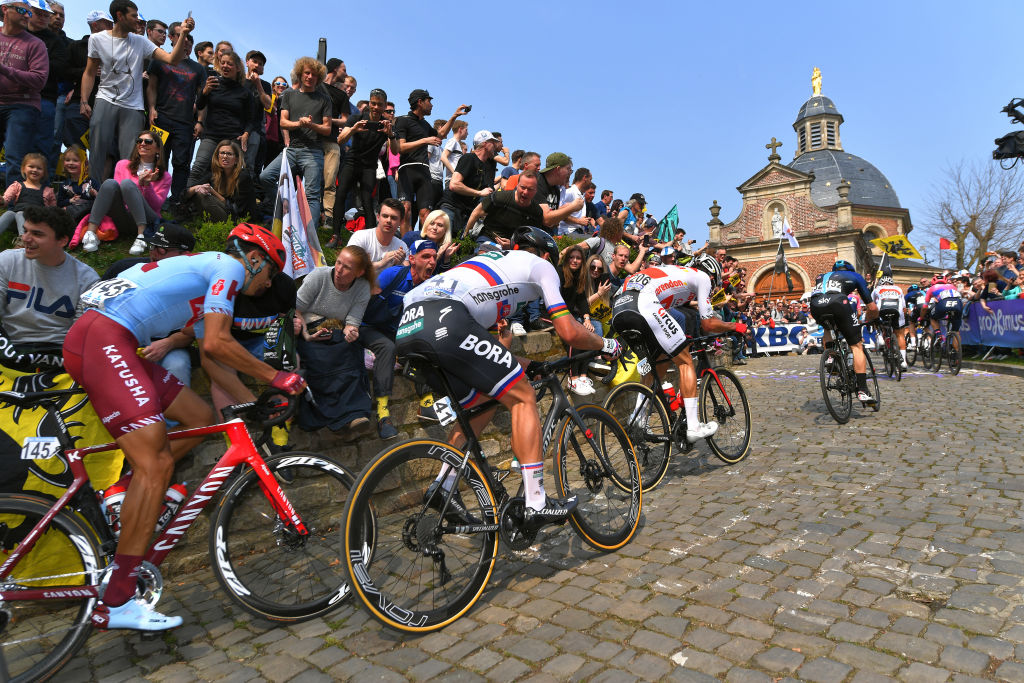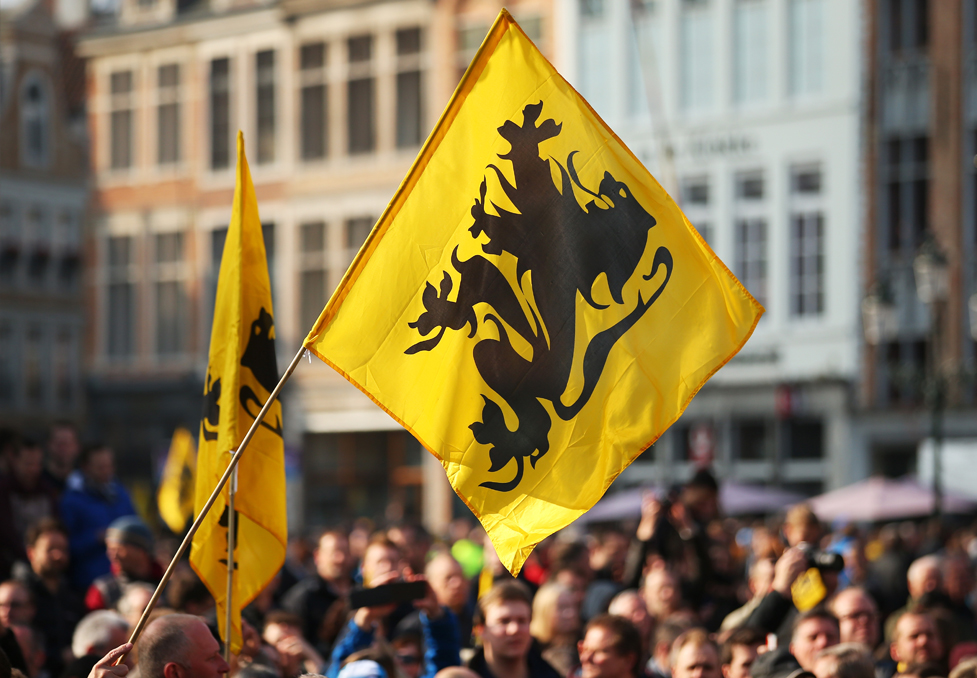Procycling magazine: Inside the Ronde
Procycling looks at the history and geography of Belgium's biggest race

The Tour of Flanders is Belgium's biggest race. Procycling magazine looks at the history of the monument and what makes it one of the hardest to win.
This article was taken from Procycling magazine issue 267, April 2020.
Get five issues of Procycling magazine for £5/$5/€5 as part of our Spring Sale.
Flemish writer Omer Wattez described the Vlaamse Ardennen, the Flemish Ardennes, as, “My beautiful country, with wide vistas, strong green and long rows of trees.” It’s an almost Tolkienesque corner of the world – gently rolling hills, farms, hilltop copses and panoramas of green, dotted with orange rooftoops and a network of villages connected by zig-zagging roads.
The ridge that forms the range fills a rough rectangle between the towns of Oudenaarde, Ronse, Zottegem and Geraardsbergen, never reaching more than 150m altitude on the Flemish side of the language border. The region is picturesque, but in a functional way - it has none of the grandiosity of the great mountain ranges of Europe, nor the temperate climate of the Mediterranean, nor the cosmopolitan population density of Belgium’s more urban areas. From a distance, it looks pleasant enough. It’s only when you get up close that you notice the grit.
If the Tour de France is bright sunshine, colour, brightness and sensory overload the Tour of Flanders is overcast skies, earth tones, mud and austerity. The ancient Greeks divided the world into the four elements of air, water, fire and earth – the Tour de France and Italian races are events of the air; the Tour of Flanders belongs to the earth. In the modern era of cycling the races have little in common: tactically, aesthetically, climactically – once you get beyond the fact that both events are contested on bikes, more separates them than links them.
The Ronde – the Tour of Flanders – is perhaps the world’s most complex bike race. Fans sometimes argue the toss over whether Paris-Roubaix or the Ronde is the greater race and maybe we should just be thankful that the sport has two events worthy of such an argument. Of course, the Ronde is tough – with a series of steep climbs, some of which are cobbled, plus flat cobbled sections.
Get The Leadout Newsletter
The latest race content, interviews, features, reviews and expert buying guides, direct to your inbox!
But it’s tactical as well. The route traverses the flat and wind-scoured Flandrian plains between Antwerp and the Flemish Ardennes, then it criss-crosses the range, sometimes hitting the north flank, sometimes the south, and dipping in and out of the valleys between. The climbs are narrow, therefore they string the peloton out, therefore not being in the first 10 or 15 riders can cause problems, therefore there’s a huge fight to occupy those coveted spots in the lead-up to the climb.
Trouble is, the roads approaching the climb may also be narrow, or the surface may be bad, or the wind direction means that moving up can only be done on one side of the peloton. And the trouble with that is that the right time to move up might well have been three climbs and 15km ago. And the trouble with that is that everybody knows that, so the actual right time to move up was 20km ago. It’s more than tactics – somebody in the team needs to have route knowledge and understanding of the roads so deeply ingrained that it feels like instinct.
The shape of the race has evolved over the years. It used to start and finish in Gent and made fewer incursions into the Flemish Ardennes. Through the 1970s and up to 2011, the finish moved to Ninove and the race started incorporating more climbs, while the start went to Sint-Niklaas, then Bruges. The race found its defining pattern for that period in the final 30km kilometres, which incorporated the urban drag of Tenbossestraat in Brakel, the iconic Muur van Geraardsbergen, the final straight-up climb of the Bosberg and the swooping, curving final 12km to the finish.

In 2012, the race switched to a laps-based format which took some time to bed in – the Muur was taken out, the finish moved to Oudenaarde and the Oude Kwaremont became the central locus of the race, appearing three times. The Muur-Bosberg double whammy was replaced by the Oude Kwaremont-Paterberg combination, with a flatter, straighter run-in to the line. Physically, there wasn’t much to choose between the two challenges - you have one long climb followed by a short steep climb, and another long climb followed by a short steep climb: pick one.
The current iteration remains complex, but there are some very obvious focal points. The Muur, back in the race, comes with 100km to go. It’s a little out on a limb to the east of the rest of the race, and the next climb, the Kanarieberg, is 18km later. But the Muur is so hard and so notorious that it is still a dangerous flashpoint, and was the location of the winning move in 2017. Then the second ascent of the Oude Kwaremont, the Paterberg and Koppenberg all come within 12km of each other.
Two more climbs – Steenbeekdries and the Taaienberg – again come quickly, but the Kruisberg has been a crucial point in recent years. The cobbled section of the climb is steep and hard, but it continues to drag up for several hundred metres. Then comes the final Oude Kwaremont-Paterberg combination. Here, the strongest rider can simply ride away, but it’s only here that all the small efforts made to close gaps, fight for position and hold a place near the front add up.
Though the post-2011 format has evolved into a more balanced race than the first editions, which were simply too hard, the first rider or group to the top of the Paterberg has held the gap to the finish every time. When the organisers find the right amount of nuance to make the final 12km more than just a victory procession, the race will have found its sweet spot. It’s the perfect race - a physical and mental test, which always crowns a deserving winner.
Edward Pickering is Procycling magazine's editor.
Procycling magazine: the best writing and photography from inside the world’s toughest sport. Pick up your copy in all good newsagents and supermarkets now, or pick up a Procycling subscription.
Edward Pickering is Procycling magazine's editor. He graduated in French and Art History from Leeds University and spent three years teaching English in Japan before returning to do a postgraduate diploma in magazine journalism at Harlow College, Essex. He did a two-week internship at Cycling Weekly in late 2001 and didn't leave until 11 years later, by which time he was Cycle Sport magazine's deputy editor. After two years as a freelance writer, he joined Procycling as editor in 2015. He is the author of The Race Against Time, The Yellow Jersey Club and Ronde, and he spends his spare time running, playing the piano and playing taiko drums.